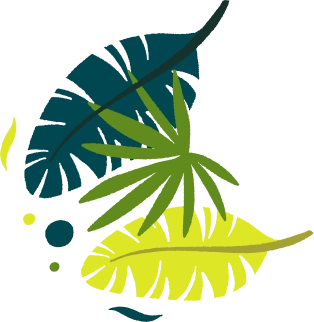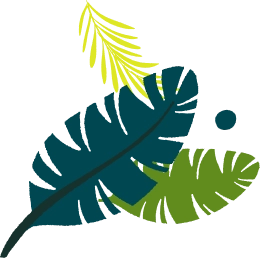


Planning a Vietnam trip can feel overwhelming as there’s so much to see!
I remember the excitement (and slight panic) of my first Vietnam itinerary of planning for various beaches, mountains, street food stalls, ancient temples… all squeezed into just two weeks.
With experience, I’ve learned that Vietnam is meant to be savored, not rushed.
In my Vietnam trip planner guide, I’ll share friendly, travel-tested advice on how to create a flexible itinerary. We’ll cover visa basics, transport options, regional highlights (north, central, south), and insider tips (like must-have apps and local money hacks).
P.S Pu Luong is a hidden gem of Vietnam which you gotta visit ASAP before it goes mainstream!
Visa Requirements: Most people need a visa to enter Vietnam. Many nationalities can get an e-visa online in advance, valid for 30 days. Check the official Vietnam Immigration Portal for the latest info (Some of the VPNs are blocked so you might have to turn it off if the website is not loading).
Pro Tip: Avoid visa scams by applying only through the government site. Plan this at least a week before departure. Some countries (like ASEAN neighbors, Japan, S. Korea) have visa exemptions for short stays. Confirm current rules before booking flights.
I see so many third party websites offering the visa on arrival or online and charge almost 2x to even 5x the official cost. Not all of them are scamming you but you will lose a lot of money for something which you can apply in less than 30 minutes!
International Flights: The main hubs are Hanoi (north), Da Nang (central), and Ho Chi Minh City (south). Flying into one city and out another (multi-city ticket) saves backtracking. For example, land in Hanoi and depart Ho Chi Minh City (or vice versa). Budget airlines like VietJet, Bamboo Airways and Vietnam Airlines offer frequent flights between regions if you need to hop around.
a Train Passing Through Hanoi City
Domestic Transport:
Trains: The Reunification Express train runs between Hanoi and Ho Chi Minh City (north to south) in ~30+ hours. It's scenic but slow. Overnight “sleeper” cabins are a fun experience if you have time. The down side: it only stops in major cities, and delays are common.
Use the Vexere app for booking for ease without language issues while travelling in Vietnam.
Buses: Sleeper and open-seat buses cover almost every route. They’re cheap (from $15/ride) but vary widely in comfort. Book well-reviewed companies (Sinh Cafe, Kumho) if using overnight buses (also buy tickets through reputable apps). Buses are popular for short hops (e.g., Hue-Da Nang).
Domestic Flights: To save time, internal flights are plentiful. A 1-hour flight (around $50-$100) cuts days of travel. Airlines often have promotions, so watch for deals. Just remember the extra time for airport transfers.
Trains/Flights Apps: Vietnamese apps like Baolau or 12go.asia aggregate schedules for trains, buses, and flights - super handy for checking prices and booking tickets.
Getting Around Cities: In Hanoi and HCMC, motorbike taxis (“GrabBike”) are ubiquitous and a fun way to zip around. Download Grab (SEA’s equivalent of Uber) to compare car rides and motorbike prices. A helmet will be provided. For shorter tourist streets, walking or battery-powered scooter rentals are options.
Vietnam runs north-south through several climate zones - each offers unique experiences. Here’s a quick region-by-region rundown:
View of a Path Leading to a Village in Mai Chau Valley, Vietnam
Northern Vietnam:
Hanoi & the Red River Delta: Start in Hanoi’s Old Quarter for 36 historic streets of food stalls and French-colonial flair. Don’t miss the Temple of Literature or Hoan Kiem Lake’s turtle shrine. Just outside the city is stunning Ninh Binh (Trang An) with limestone karsts and boat tours (and yes, this is a filming location for Kong: Skull Island!). A bit further, hike at Ba Vi National Park or camp at Mai Chau Valley for rice fields and biking.
Highlands (Sapa, Ha Giang, Ba Be): Trekking with mountain tribes and emerald terraces is the draw. Ha Giang loop (motorbike route) is famed for jaw-dropping switchbacks. Ba Be Lake National Park offers kayaking on a turquoise lake. For cooler weather (and rice paddies), visit Mu Cang Chai and Hoang Su Phi (off-the-beaten-path).
a Homestay in Ha Giang
Central Vietnam:
Hue: The old imperial capital with a moody Perfume River and the Imperial Citadel. Rent a bicycle to circle tombs of Nguyen emperors. Try the local specialty bun bo Hue (spicy beef noodle).
Danang & Hoi An: Danang has modern beaches (My Khe Beach) and Dragon Bridge. Ten minutes away is Hoi An, a UNESCO town known for lantern-lit nights and tailor shops. Sample cao lau noodles, and if you stay until dark, walk along the river with floating candle-lit baskets for wish-making. A secret beach at An Bang (Hoi An outskirts) is perfect for sunset.
Hidden Cu Lao Cham: Offshore from Hoi An, these islands are a marine reserve for snorkeling (access via daily boats).
Cu Lao Cham the Hidden Beach Near Hoi An
Central Highlands (Pleiku, Buon Ma Thuot): Less-visited, but you’ll see vast coffee plantations, waterfalls (Dray Nur), and Elephant Rides. People here speak languages of various hill tribes (Jarai, Bahnar).
Buon Ma Thuot Waterfall
Southern Vietnam:
Ho Chi Minh City (Saigon): The bustling modern city with French colonial architecture (Notre-Dame Cathedral, Central Post Office). Take the Cu Chi Tunnels half-day trip to learn Vietnam War history. Food highlights include banh xeo (crispy pancakes) and lively street cafés.
Mekong Delta: A maze of rivers and rice paddies. Stay in Can Tho or Chau Doc. Floating markets (e.g., Cai Rang in Can Tho) are vibrant at dawn. A biking/homestay tour through villages (like Ben Tre’s coconut groves) shows rural life.
Phu Quoc Island: If you crave beaches, this tropical island near Cambodia is Vietnam’s top beach destination (white sand, snorkeling, and fresh seafood).
Phu Quoc Island Gives off Somewhat of European Vibes
Best Time to Travel:
North: Cool/dry (Oct-Dec) or warm/dry (Feb-Apr). Avoid the coldest winter nights (Hanoi can be 10°C in Jan).
Central: Warm year-round, but Typhoon season (Oct-Nov) can bring heavy rains. Peak summer (June-Aug) is hot and dry.
South: Dry season (Dec-Apr) is ideal; rainy season (May-Nov) sees daily afternoon showers but still warm.
Overall: March-April and October-November are sweet spots when all regions have good weather on average.
Entrance Fees & Cities: Museums and historical sites often charge small fees (e.g., the Citadel in Hue, or Cu Chi tunnels ~150,000 VND). Cities like Hanoi and HCMC have bike/rickshaw tours; typically bikes are free to rent at hotels, just tip.
Currency: The Vietnamese dong (VND) is used everywhere. ATMs are plentiful in cities but harder to find in rural areas (carry cash). Credit cards work at big hotels and some restaurants, but always carry some cash for food stalls or markets.
Language: English is spoken in tourist areas; learning a few Vietnamese phrases (hello xin chào, thank you cảm ơn) will endear you to locals.
Connectivity: Buy a local SIM card at the airport (Vinaphone/Mobifone) for cheap data. Wi-Fi is standard in hotels and many cafes.
Budgeting: Vietnam is generally budget-friendly. A backpacker on a shoestring can eat street food (pho ~30k VND) and stay in dorm beds (~200k-300k VND). Mid-range travelers find hotels for $30-50, and meals $5-10. Luxury travelers will find beachfront resorts and fine dining too.
Everyone Should Experience a Rainy Night of Hoi an Its Just Beautiful!
Day 1-2: Hanoi & Surroundings - Wander the Old Quarter on foot. Visit Hoan Kiem Lake at dawn. Afternoon: day trip to Ninh Binh (Trang An boat tour, 2nd Capital Hoa Lu). Enjoy street food (bun cha, egg coffee).
Day 3-4: Sapa/Ha Giang Trek - Overnight train to Lao Cai, arrive Sapa. Trek 2 days in ethnic villages (Muong Hoa Valley). [Alternative: Fly to Dien Bien Phu and transfer to Ha Giang for a motorbike loop.]
Day 5-6: Hue - Train or flight to Hue. Imperial City tour, Thien Mu Pagoda and tombs. Cyclo ride by Perfume River. Try bun bo Hue.
Day 7-8: Hoi An & Danang - Bus or drive over Hai Van Pass (breathtaking coastal pass). Explore lantern-lit Hoi An streets at night. Beach break at An Bang.
Day 9-10: Ho Chi Minh City - Fly to HCMC. Take a street food tour (banh mi, pho), visit the War Remnants Museum and Central Market. In the evening, explore Bui Vien backpacker street.
Day 11: Mekong Delta - Day trip to My Tho or Can Tho. Floating market boat ride, try river prawns and tropical fruits. Return to HCMC.
Optional Day 12-14: Add beaches (Phu Quoc or Nha Trang) or jungle (Cuc Phuong NP north of Hanoi, or Cat Tien NP near HCMC).
This itinerary can be reversed (start south and go north) or split into shorter segments (e.g. a slow 3 week trip vs. a packed 10-day dash). Always leave buffer days as travel delays happen, and rest days are golden!
a Beautiful Temple in Nha Trang, Vietnam
Q: Do I need a visa to travel to Vietnam?
A: Yes, most visitors do. The easiest option for a short stay is the online e-visa (valid for 30 days, single entry). Apply at least a week before your trip. Some passports are visa-exempt for short visits (check Vietnam’s official immigration site).
Q: What is the best length for a Vietnam trip?
A: To see the highlights of north, central and south, plan at least 10-14 days. A 2-week trip can cover Hanoi → Hoi An/Phong Nha → HCMC → Mekong comfortably. If you have just 7 days, focus on one region (e.g., Hanoi & Ha Long Bay, or HCMC & Mekong Delta).
Q: Can I use ride-sharing apps in Vietnam?
A: Yes! Grab works in cities like Hanoi and HCMC (car and bike rides). Be is a local motorbike-taxi app. It’s often cheaper than hailing taxis on the street, and lets you see the price upfront.
Q: Is tap water safe to drink?
A: No, stick to bottled or boiled water. We recommend bringing a refillable bottle and a sterilizing pump or filter if you plan to stay long-term. Ice in drinks is usually made from purified water, but use your judgment.
Q: What should I pack?
A: Pack light! A good daypack, a rain jacket or umbrella, and quick-dry clothes. Include sunscreen, insect repellent (especially for Hoi An and Mekong), and anti-diarrhea medicine (common street food indulgence). If trekking in the north, sturdy shoes and a warm layer for chilly mountain nights.
Get the latest information about our tours and special offers!